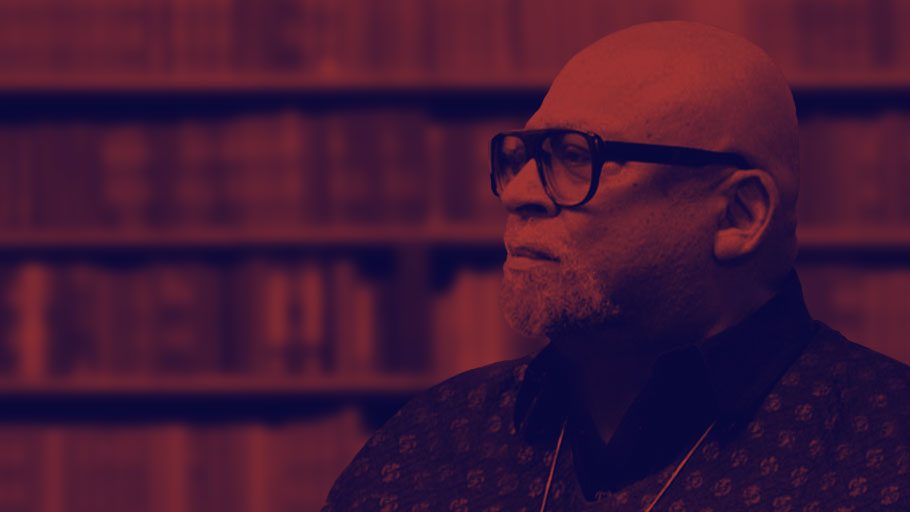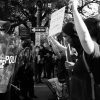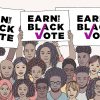Dr. Maulana Karenga
It was clearly a White thing, not a Black thang, or a multicultural mixer of equals, and all of us could easily understand it. It was White folks’ big night out, the night of “Mr. Charlie”, “Miss Ann” and “Uncle Oscar”, a kind of White family affair—readied, reserved and red-carpeted, especially for them. Of course, we were there to watch them anxiously wait and win and to make ourselves useful as expected entertainment, drafted foils, fictive friends and local color. And like the Black maids and male servants in old black and white movies, we could only watch them with rented admiration and glaring eyes, and vicariously enjoy their honors and accolades without an iota of hope for our own.
There were some pre-Oscar and post-racial fantasies and rumors that the movie “Selma” and the memory of that historical march and moment 50 years ago might help turn rightful attention to Black excellence in the art and industry. But as usual, Uncle Oscar favored the family members of those who made him, and left no guessing about who was coming to dinner, to really be a diner. For he/they put little or nothing on our plate. And as Malcolm told and taught us, using one of the incisive analogies he is known for: “sitting at the table doesn’t make you a diner unless you eat something of what’s on the plate”.
But let’s be fair about it, we did “take out” or “take away” at least a symbolic nomination of Selma for best picture and a consolation Oscar for best song “Glory”, even if the main items of the evening, i.e., best actors, supporting actors, directors, etc., were not on the menu of nominations we had in our hands. And the exclusion of other peoples of color doesn’t explain away or ease our exclusion and injury; on the contrary, it only emphasizes and aggravates our own, for it reveals how pervasive and pernicious this racialized exclusion is.
The two Black men that received the Oscar for best song, Glory, in Selma, had two different views of who we are and what we are about and how we should engage art and the platform it provides us. Common went universal, papering over the particular and powerful meaning of the struggle in Selma has for us, as a people, and as a moral and social vanguard in this country. It is a role which Dr. Mary McLeod Bethune and Dr. Martin Luther King and so many of our ancestors asked us to always remember and honor. In noting the symbolic meaning of the Selma Bridge, Common said in Obama-esque language, “This was once a landmark of a divided nation, but now is a symbol for change”. But the Edmund Pettus Bridge in Selma is a site of blood-soaked and savage repression of Black people in their righteous struggle for the right to vote and to be free from official and unofficial repression. And thus, it is not simply a White-comforting symbol of anonymous “change”, but a symbol of Black suppression, suffering, sacrifice, relentless resistance and eventual triumph.
On the other hand, John Legend paid homage to his people and their history and culture of struggle, quoting Nina Simone’s assertion that “it’s an artist’s duty to reflect the times in which we live”. He explained that “We wrote this song for a film that was based on events that were 50 years ago, but we say Selma is now, because the struggle for justice is right now”. Legend spoke too of the erosion of voting rights and the obscene number of Black men who are “under correctional control today” and reaffirmed that “the struggle for freedom and justice is real”. He closed saying, “When people are marching with our song, we want to tell you that we are with you; we see you; we love you, and march on!”
Now these two approaches lie before us: to find, in our own lives, culture and history, meanings and messages for both us and the world; or failing to do so, self-erase, talk of transcending oneself and one’s people, and hang in mid-air as anonymous non-existent humans. But if we don’t exist, then we have no interests, no rightful claims and no legitimate concerns about being excluded, exploited, diminished or oppressed.
It is also important to note that a diversionary controversy emerged around someone named Rancic, from some mean-spirited and narrow-minded group called the Fashion Police, foul-mouthing the long and self-affirming locks of the young Black Disney Channel star, Zendaya, linking them with the smell of oil and weed. Zendaya’s response was well-crafted and dignity-affirming, not only of the “strength and beauty” of Black hair, as she said, but also by extension, a reaffirmation of the strength, beauty and dignity of Black people. For the attack reflected an ongoing problematizing and demeaning of the Black body and Black people. And her response was also a necessary corrective to this public expression of what Zendaya called “ignorant slurs and pure disrespect”. In addition to her required apology, which she made, Rancic should also divest herself of racist illusions of the right and ability to judge others based on some conscious or unconscious and racially arrogant assumption that White is “normal” and all else is deviant and in need of criticism, condemnation and correction.
These comments were racist, stereotypical, racially immodest and unmindful of what others might negatively think of the smells of White hair and bodies in various states and venues. They also demonstrate how deep-rooted and pervasive such attitudes and associated behaviors are. And, of course, it’s no problem when Whites wear locks. But an even greater concern is that these and similar racist attitudes are often turned into public policy and socially sanctioned practice and are thus very damaging to and destructive of the lives of Black people and other peoples of color. People may apologize, but the conditions negative to our lives and advancement remain unless challenged and removed.
Thus, whatever small reforms and adjustments we make in instances like these, the larger problems of systemic racial domination, deprivation and degradation must be effectively addressed. As I write this article, the LAPD has killed another Black man, Brother Africa, an unarmed and homeless man. So Ferguson and police violence have become the current symbol and focus of our struggle, but as Paul Robeson, that consummate actor and activist intellectual, reminded us and his fellow artists, writers and intellectuals, “the battlefront is everywhere; there is no sheltered rear”. Yes, Hollywood is one among those racially fortified beachheads on which we must secure a foothold, under fierce, constant and devastating fire. But we must always remember, there is a larger and longer struggle which will not only transform Hollywood, but also society itself and the people in it, including us and the way we understand and assert ourselves.
Dr. Maulana Karenga, Professor and Chair of Africana Studies, California State University-Long Beach; Executive Director, African American Cultural Center (Us); Creator of Kwanzaa; and author of Kwanzaa: A Celebration of Family, Community and Culture and Introduction to Black Studies, 4th Edition, www.OfficialKwanzaaWebsite.org; www.MaulanaKarenga.org.
03-02-15















